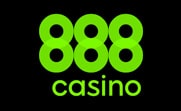Roulette sector bets combine several regular wagers (typically inside bets) into a big whole. Their most important distinction from classic inside and outside bets is that they are not placed using the standard betting table. Instead, numbers are selected based on their proximity on the roulette wheel itself.
To better understand this difference, all you need to do is look at the wheel and compare it to the table grid.
For instance, let’s look at the number 5. The number 5 pocket of the wheel borders the numbers 10 and 24. On the other hand, it’s located between 2, 4, 6, and 8 on the table. If you wanted to place a bet that covers 5, 10, and 24, you couldn’t do that with a standard Split or Corner bet. That’s where sector bets come into play.
Historically, sector bets have also been called “call bets” or “announced bets”. In land-based roulette, players make these wagers by speaking them out loud instead of putting chips down on the table – hence the name.
However, online roulette games instead use a special UI element often called “racetrack view” because it looks like a horse racing track. It’s also why the term “call bets” is largely outdated.
The origins of this type of betting are not quite clear, though it was first mentioned in French casinos of the early 20th century. Sector betting became increasingly popular in the 60s and 70s as renowned players like Richard Jarecki used the strategy to great effect. Most common sector bets have retained their French language names, which is why they’re also sometimes called “French bets.”

Common Sector Bets in Roulette
Importantly, sector bets are not actually new types of bets. Most of them essentially just combine several regular wagers into one big whole. If you need help understanding basic roulette bets such as Straight Up and Split, check out this guide.
Also, sector betting is not traditionally offered in American roulette. Although some modern live roulette tables offer a racetrack view, we still recommend sticking with European and French variants because they’re objectively better.
Most types of sector bets involve large groupings of fixed numbers and wagers. Others, such as Neighbors, are more versatile and can be moved across the wheel. Here are the most common types of sector bets and how each one works.
Voisins du Zéro (Neighbors of Zero)
Voisins du Zéro is the largest type of sector bet, covering 17 numbers in total. It essentially targets the whole section of the wheel between the numbers 22 and 25.
The full bet consists of 5 Split bets, one Basket (trio), and a single Corner wager.
To make a Voisins du Zéro bet in roulette, you need to divide the full stake into 9 equal parts or units. Then, use these units to place these exact bets:
- 5 Split bets – one unit each on 4-7, 12-15, 18-21, 19-22, 32-35
- 1 Basket bet – two units on 0-2-3.
- 1 Corner bet – two units on 22-25-28-29.
The main idea here is to cover the green zero pocket and a large section of the wheel that’s close to it. This gives you a high probability of winning – roughly 46% in any given round.
This bet has three possible outcomes:
- You win a Split or Corner bet, doubling your initial stake
- You win a Basket bet, winning a total of 24 units
- You lose
You can check out the table below to see a full breakdown of each possible outcome and how probable it is.
Jeu Zéro (Zero Game)
Jeu Zéro is essentially a smaller, more manageable version of Voisins du Zéro. It also covers a section of the wheel that’s closest to the green zero pocket, albeit a much smaller section.
It’s essentially a more volatile version of Voisins – you cover fewer numbers and aren’t as likely to win, but the payouts are larger relative to the full stake you used.
Jeu Zéro consists of 4 bets in total – three Split bets and a single Straight Up wager. To place it, start by splitting your intended stake into 4 equal units. Then, make the following bets:
- 3 Split bets – one unit each on 0-3, 12-15, and 32-35
- 1 Straight Up bet – one unit on 26
This covers 7 numbers in total, giving you a roughly 19% chance of success. However, there are still three possible outcomes of Jeu Zéro:
- You win a Split bet, winning 18 units in total
- You win a Straight Up bet and a total of 36 units
- You lose
Check out the table below for a full stat breakdown of Jeu Zéro and its possible results.
Tiers du Cylindre (Third of the Wheel)
As the name implies, the Tiers du Cylindre sector bet aims to cover a third of the wheel. It essentially covers the part of the wheel opposite the two Zero bets. It’s not the exact opposite, but it’s a nice way to visualize how it works.
It’s one of the simpler common sector bets, consisting of six Split bets in total. As one would expect, this gives you a roughly 32.4% chance to win. In terms of volatility, it sits somewhere between Jeu Zéro and Voisins du Zéro.
One advantage to the Tiers bet is that there are only two possible outcomes. This makes it easier to track results and statistics, but it also limits how successful you can be if you exclusively use this wager.
To make a Tiers du Cylindre bet in roulette, split your total stake for the round into six equal units. Then, place them as follows:
- 6 Split bets – one unit each on 5-8, 10-11, 13-16, 23-24, 27-30, and 33-36
This translates into two potential outcomes:
- You win a Split bet, tripling your total stake
- You lose
This makes the Tiers bet roulette ideal for beginners who want to try their hand at sector betting but don’t want to overcomplicate things. It’s also suitable for betting systems and other strategies that involve consistent betting and returns. See the table below for more details.
Orphelins (Orphans)
The Orphelins bet in roulette covers 9 numbers of the wheel clustered into two sectors. It’s basically a way to cover the two parts of the wheel that are not covered by Voisins du Zéro and Tiers du Cylindre.
The aptly named Orphans bet stands out because it actually targets two sectors instead of one. It covers numbers ranging from 1 and 9 on one side of the wheel and from 17 and 6 on the other. Also, it uniquely uses two bets to cover a single number, which can result in some interesting outcomes.
This type of sector bet is popular because it requires the lowest investment – 5 units. Although the size of every unit can be made to fit your budget, dividing your stake into units makes it harder to meet minimum bet limits. That’s why Orphelins is easier to handle than a bigger bet like, say, Voisins du Zéro.
The Orphelins bet in roulette consists of four Split bets and a single Straight Up. To place it, split your stake into 5 equal parts and make the following bets:
- 4 Split bets – one unit each on 6-9, 14-17, 17-20, 31-34
- 1 Straight Up bet – one unit on 1
This spread means that you stand to win 21.7% of all rounds. However, notice that the number 17 is covered by two Split bets, which means you win both of them if the ball lands exactly on 17. In other words, there are four possible outcomes:
- You win a Split bet, winning 18 units in total
- You win a Straight Up bet on 1 and a total of 36 units
- The ball lands on 17, so you win two Split bets for a total of 36 units
- You lose
The double coverage on 17 helps Orphelins stand out from Jeu Zéro because it introduces additional outcomes.
Neighbors Bet
The Neighbors bet refers to a combined wager that places multiple Straight Up bets on multiple numbers based on their proximity on the roulette wheel.
Unlike most other sector bets, this type of bet does not target a specific, fixed set of numbers. Instead, it’s intended to allow you to target any part of the wheel you want. This makes it a lot more versatile than Zero, Tiers, or Orphans because you are not limited to an exact combination of standard bets.
However, it’s still a Sector bet because the number combinations are based on the relevant pocket’s physical location and not the standard betting table.
To find out what a Neighbors bet will be like, here’s what you need to do:
- Take a look at either the wheel or the racetrack view in online roulette games
- Pick out a number in the section of the wheel you want to target
- Place a Straight Up bet on that number
- Look at the numbers immediately to its left and to its right
- Place equal Straight Up bets on the 2, 4, or 6 numbers closest to your target
From the standpoint of probability, there is no difference between Neighbors and any other combination of an equal number of Straight Up bets. The idea is to be able to quickly and easily target parts of the wheel. This can be very useful if you notice that the dealer or the wheel itself is biased towards one end.
There are three distinct types of Neighbors based on how many numbers you select – three, five, or seven.
Three-Number Neighbors
The smallest Neighbors bet consists of three Straight Up bets on three numbers whose pockets are immediately next to each other.
To make this bet, split your stake into three equal units and select any number on the wheel. Place a Straight Up bet on that number with one unit. Then, place the exact same wager on the numbers located next to it on the wheel using 1 unit each as a stake.
For example, let’s say you wanted a three-number Neighbors bet on 17. The full wager would consist of the following Straight-Up bets:
- 1 unit on 17
- 1 unit on 34
- 1 unit on 25
If any of your chosen numbers end up winning the round, the payout is always the same – the usual 35:1 for single-number basic bets.
The main advantage of this variant is that it’s small, affordable, and easy to manage. You don’t have to split your stake into too many units so it’s easy to work within table betting limits. It also boasts high returns of 12 times your full stake if you win.
On the other hand, it only covers three numbers, which adds up to an 8.1% chance to win. Unless combined with other bets, three-number Neighbors are very risky.
Five-Number Neighbors
Five-number Neighbors bets combine 5 Straight Up bets to target a single number on the wheel and its four closest neighbours. It’s largely identical to its smaller three-number cousin, except that you’re placing 5 wagers in total.
Simply pick a wheel pocket and make a Straight Up bet on that number. Then, place the same bet with the same stake on the 2 numbers found in pockets immediately to its right and the 2 numbers immediately to its left.
For example, let’s say you wanted a five-number Neighbors bet on 17. The full wager would consist of the following Straight-Up bets:
- 1 unit on 17
- 1 unit on 34
- 1 unit on 6
- 1 unit on 25
- 1 unit on 2
If any of your chosen numbers win, you win a 35:1 payout, which means you get 36 units back in total. However, your actual net winnings are smaller than with three-number Neighbors because your total stake was higher.
This perfectly illustrates the pros and cons of 5-number neighbors in roulette. It’s more likely to win than its three-number counterpart, but it pays less relative to the necessary investment.
Seven-number Neighbors
A seven-number Neighbors bet in roulette targets a sector of 7 pockets on the wheel, covering roughly 19% of it. It’s bigger than the other common variants of Neighbors, but that’s pretty much the only difference.
The process of making seven-number Neighbors is also identical. Simply pick any number and find its corresponding pocket on the wheel or racetrack view. Then, find the three numbers to its left and the three numbers to its right. Place equal Straight Up bets on all 7 of these numbers, and you’re good to go.
Let’s go back to our example to illustrate. To place a seven-number Neighbors bet on 17, you would make the following bets:
- 1 unit on 17
- 1 unit on 34
- 1 unit on 6
- 1 unit on 27
- 1 unit on 25
- 1 unit on 2
- 1 unit on 21
Any winning result will net you a 35:1 payout on a single unit. Obviously, this means that your net winnings are smaller because you’re using 7 units to wager every round. However, the odds of winning one of these Straight Up bets is just under 20%, which is substantially higher than with 5-number roulette bets. You can see a detailed overview in the table below.
To sum things up, the chart below displays the basics of how every section bet works. It shows the exact bets you need to place and the numbers to put them on. The chart also allows you to easily compare the main sector bets and reference them for later use.

How to Place Sector Bets in Practice
Placing sector bets is as easy as making any other wager at a roulette table, provided you know what to look for.
The exact process depends on how you’re playing roulette – in real life or at an online casino.
Land-Based Casinos
Sector bets are often referred to as “call bets” because you place them by announcing them. Note that you can only do so if the table rules allow for call bets in the first place. If you’re unsure, simply ask the croupier.
Essentially, all you need to do is say the name of the bet to the croupier. For instance, announcing a ‘Jeu Zero for 10’ will let them know that you’re making a Jeu Zero bet that uses $10 as a unit.
Importantly, the stake you announce is used per individual bet, not as a total for the round.
To place a Neighbors bet, you simply need to specify the desired number and how many of its neighbours you wish to cover. Phrasing it as “$10 on 17 and two neighbors” would work, for instance. As long as you clearly indicate that you’re placing a Neighbors bet and the target number, you’ll be fine.
Lastly, some casinos require you to put the necessary chips on the table before they consider it a valid bet. Others will accept the wager as soon as you announce it. Make sure to check on the house rules before playing.
Online Roulette
Playing roulette online actually makes sector bets a lot easier to place thanks to modern user interfaces.
To place a sector bet you need to use an UI element often called a “racetrack.” It’s typically found on the side of the regular betting table. You can see an example in the screenshot below.
- Start by selecting a stake size as you would for any regular bet. Note that your selected stake will be used as a single unit. That means that you would need a total of nine times the selected amount to place a Voisins du Zéro bet, for example.
- Then, click on the bet you want to make. Hovering over the name of the bet will highlight the numbers it covers on both the racetrack and betting table views.
- Confirm the bet, if necessary. Some games accept bets as soon as you click them. Others require an additional action to confirm it.

Note that Neighbor bets work a bit differently. To place a Neighbor bet in online roulette, here’s what you need to do.
- Pick the size of the stake you wish to use per individual Straight Up bet. The total stake for the full bet will depend on how many neighbouring numbers you decide to include.
- Select how many neighboring numbers you want to cover on each side of the selected number. For example, selecting 2 will cover 2 numbers to your target number’s left and 2 numbers to its right, resulting in a five-number Neighbors bet. This option is typically found above the racetrack view.
- Click on the target number in the racetrack view. This will place the appropriate Straight Up bets based on your previous two selections.

Both RNG-based games and live dealer tables use similar methods. We recommend playing live casino roulette because it offers a more authentic experience, but it’s up to you.
On the other hand, non-live online roulette can be played for free and does not have a limited time window to place bets. This makes it ideal for getting to know sector bets because you can play around with the UI until you understand what every wager covers and how it works in practice.
The ‘Manual’ Method
While most modern tables accept Sector bets, that’s not always the case – especially in land-based establishments.
However, note that you can always make them “manually” by simply placing all their individual components the old-fashioned way. Just go down the list of required bets and place 1 unit as a stake for each one.
It can be a bit of a hassle, but most modern online roulette games also have a “favourite bet” feature that allows you to save and quickly re-apply combined wagers with a pre-set stake.
This method can also be used in brick-and-mortar casinos, though the full process may take a while. This can be especially annoying if you’re planning to repeatedly place the same sector bet. Looking for the numbers you need without a racetrack view is also a potential issue.
All things considered, we highly recommend sticking with live online roulette for this type of betting. Our advice is there purely due to convenience – large combined bets can be tough to manage when you’re working with real chips.
Payouts and Odds for Sector Bets
If you’re wondering how payouts work with sector bets, all you have to do is remember that these wagers are simply combinations of standard options such as Straight Up, Split, and Corner. The payout ultimately depends on which part of your combined roulette bet wins.
We have already covered every potential outcome of every common type of sector bet. However, the table below shows them all side-by-side, allowing you to easily compare them to each other and to standard wagers.
Importantly, the RTP of any Sector bet is the same as for any other bet on the same table. This means it’s 97.3% for European and French tables and 94.6% for American variants.
If you understand how roulette odds work in the first place, this shouldn’t be a surprise. Every type of bet in this game has the same house advantage. Since sector bets are just combinations of standard wagers, they have the exact same RTP rate and average long-term returns.









































 Roulette
Roulette
 Blackjack
Blackjack
 Baccarat
Baccarat
 Poker
Poker
 Sic Bo
Sic Bo
 Dragon Tiger
Dragon Tiger
 Game Shows
Game Shows  Top 5 Games
Top 5 Games  See more
See more  Roulette Casinos
Roulette Casinos  Low Limit
Low Limit  High Limit / VIP
High Limit / VIP  Exclusive
Exclusive  How to Play
How to Play  Basic Strategy
Basic Strategy  Top Tips
Top Tips  FAQ
FAQ  Blackjack Casinos
Blackjack Casinos  Baccarat Casinos
Baccarat Casinos  Bonuses
Bonuses  Poker Casinos
Poker Casinos  Game Providers
Game Providers  Sic Bo Casinos
Sic Bo Casinos  Dragon Tiger Casinos
Dragon Tiger Casinos  Credit and Debit Card
Credit and Debit Card  e-Wallet
e-Wallet  Cryptocurrency
Cryptocurrency  Bank and Checks
Bank and Checks  Pay by Phone and SMS
Pay by Phone and SMS  See more
See more  How-To Guides
How-To Guides  Top Lists
Top Lists  In-Depth
In-Depth  Strategy
Strategy  Casino & Games
Casino & Games  Insight
Insight  News
News  Promotions
Promotions 
 Guide to Live Casinos
Guide to Live Casinos  Top 10 Live Casino Tips
Top 10 Live Casino Tips  Studio Locations
Studio Locations  FAQ & Help
FAQ & Help  Meet The Dealers
Meet The Dealers  Our Awards
Our Awards  How We Rate
How We Rate  Responsible Gambling
Responsible Gambling 




























 ENG
ENG 















 Facebook
Facebook
 Pinterest
Pinterest
 Twitter
Twitter
 LinkedIn
LinkedIn
 Copy Link
Copy Link 






















